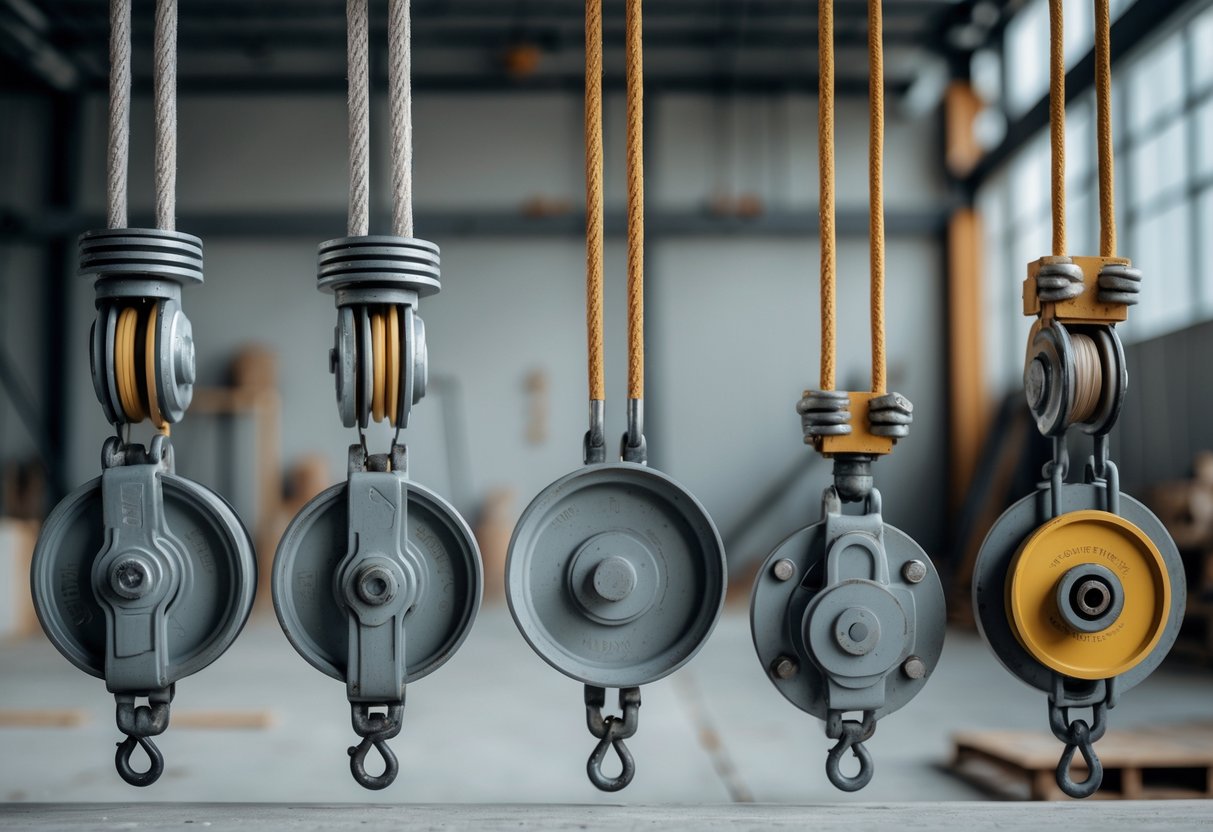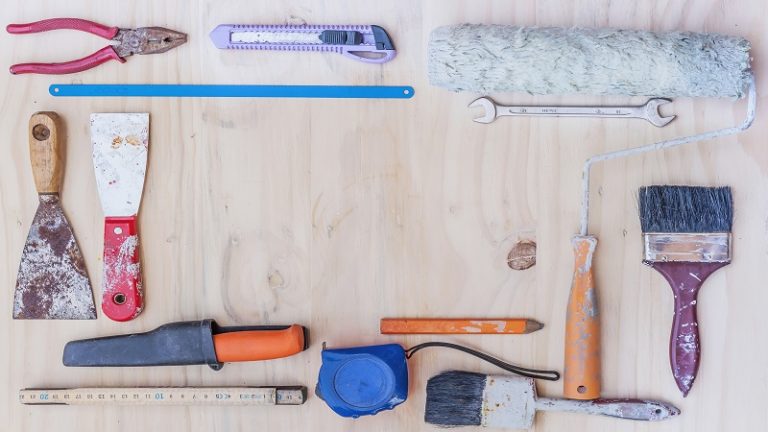Pulleys play a big role in construction, helping you lift heavy materials more easily. Knowing the right type of pulley to use can save you time and effort on the job.
The five main types of pulleys you’ll find in construction are fixed, movable, compound, block and tackle, and cone pulleys, each working in a slightly different way to help you move loads efficiently. Understanding how these pulleys work can help you choose the best tool for the task and make your work safer and smoother.
Whether you’re lifting beams or moving materials across a site, knowing about these pulleys will give you a clearer picture of how simple machines can make a big difference in your daily work.
Types of Pulleys Used in Construction

In construction, pulleys help you lift heavy loads more easily. They do this by changing the direction of force or by reducing the effort needed. Different pulley types serve different jobs, from holding ropes in place to combining multiple pulleys for greater power.
Fixed Pulley
A fixed pulley stays attached to one spot, like a beam or wall. You pull the rope down, and the load moves up. It does not reduce the effort needed but changes the direction of the force. This means you can pull down with gravity’s help, which feels easier.
You will often see fixed pulleys used with cranes or flagpoles. They help guide the rope smoothly so it doesn’t get tangled. Fixed pulleys are simple and reliable, but they don’t multiply your lifting power.
Movable Pulley
A movable pulley moves with the load you want to lift. It attaches directly to the load, and the rope is fixed at one end. When you pull, the pulley moves up, cutting the force needed in half.
This pulley type helps you lift heavier weights with less effort. It’s useful when space is tight, and you need more lifting power. Movable pulleys are common in construction for lifting materials vertically.
Compound Pulley
Compound pulleys combine fixed and movable pulleys in one system. This setup gives you a mechanical advantage, making heavy loads easier to lift by spreading the weight across multiple ropes.
You can lift loads with less force than you would need using a single pulley. Compound pulleys are found in cranes and hoists where heavy lifting is routine. They balance power and control to improve safety and efficiency.
Block and Tackle
Block and tackle is a pulley system made of two or more pulleys, arranged in blocks with rope threaded between them. This system greatly reduces the effort to lift heavy objects.
You can use block and tackle to lift very heavy loads in construction or rescue work. It increases mechanical advantage by multiplying the force you apply. This setup is strong, flexible, and widely used when maximum lifting power is needed.
How Each Pulley Works in Construction
Pulleys serve different roles in construction by making it easier to move heavy items, reduce effort, and fit specific tasks. Understanding their functions helps you choose the right pulley for the job.
Lifting Heavy Loads Efficiently
Fixed pulleys change the direction of the force you apply. For example, you pull down, and the load goes up. But they don’t reduce how much effort you need.
Movable pulleys actually reduce the force you need. The pulley moves with the load, so when you pull, the force required is less than the load’s full weight.
Combination systems, like compound pulleys or block and tackle, mix fixed and movable pulleys. These give you the best mechanical advantage, letting you lift very heavy loads easily by dividing the effort among ropes.
Reducing Manual Labor On-Site
Pulleys cut down how much manual work you and your team do. By using movable or compound pulleys, you reduce the strain on muscles and lower the risk of injury.
Some pulleys are attached to cranes or hoists, which handle big loads safely. This equipment lets you lift materials faster and with better control than lifting by hand.
Using pulleys also helps keep your workspace safer. You can move parts without carrying heavy weight directly, so workers can focus on other tasks.
Applications for Specialized Pulleys
Specialized pulleys fit certain construction needs. For example, snatch pulleys let you quickly add rope without untying the system, saving you time.
Step pulleys change speeds in machines, helping cranes adjust lifting rates depending on the load size.
You might also find changing pulleys in winches where you need different power levels for different jobs. Each helps improve efficiency in specific tools or crane operations.
Knowing these applications helps you pick pulleys that boost your productivity on site.





